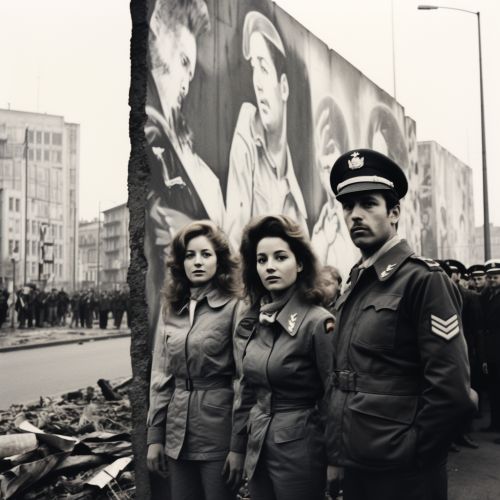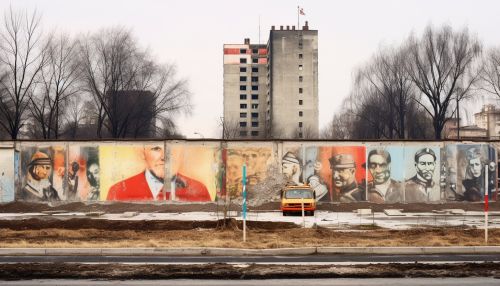German Democratic Republic
Introduction
The German Democratic Republic (GDR), also known as East Germany, was a state that existed from 1949 to 1990 in the eastern part of present-day Germany. It was established after World War II from the Soviet zone of occupation, and was part of the larger geopolitical division of Europe into two blocs: the Western Bloc and the Eastern Bloc.


History
Formation
The GDR was established on October 7, 1949, as a response to the formation of the Federal Republic of Germany (FRG), or West Germany, which had been established a few months earlier from the three Western zones of occupation. The GDR was a socialist state, with the Socialist Unity Party of Germany (SED) as the ruling party.
Cold War Era
During the Cold War, the GDR was a frontline state in the ideological conflict between the Western democracies and the Eastern communist states. The GDR was a member of the Warsaw Pact, the military alliance of the Eastern Bloc states, and was heavily influenced by the Soviet Union.
Fall of the Berlin Wall and Reunification
The fall of the Berlin Wall in 1989 marked the beginning of the end for the GDR. The event was followed by a series of peaceful protests and political reforms, which eventually led to the reunification of East and West Germany on October 3, 1990.
Politics
The GDR was a one-party state, with the Socialist Unity Party of Germany (SED) as the ruling party. The SED was a Marxist-Leninist party, and its policies were heavily influenced by the Soviet Union. The GDR had a centralized, planned economy, and private ownership of property was limited.
Economy
The economy of the GDR was centrally planned and state-controlled, following the model of the Soviet Union. The GDR was one of the most advanced economies in the Eastern Bloc, and it had a high standard of living compared to other socialist states.
Society and Culture
The GDR had a distinct society and culture, shaped by its socialist ideology and its isolation from the West. The state controlled all aspects of life, including education, media, and the arts. Despite this, a unique East German identity emerged, characterized by a sense of community and solidarity.
Legacy
The legacy of the GDR is complex and continues to be a topic of debate. While the state was characterized by political repression and economic inefficiency, it also provided social security and equality. The fall of the GDR and the reunification of Germany marked the end of the Cold War and the beginning of a new era in European history.
